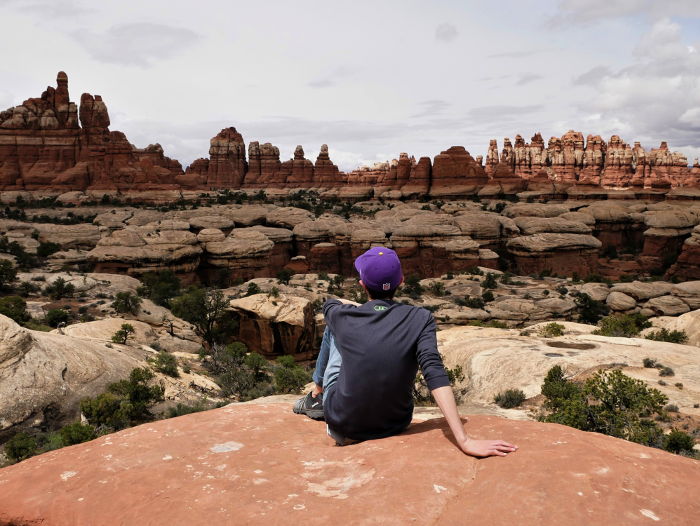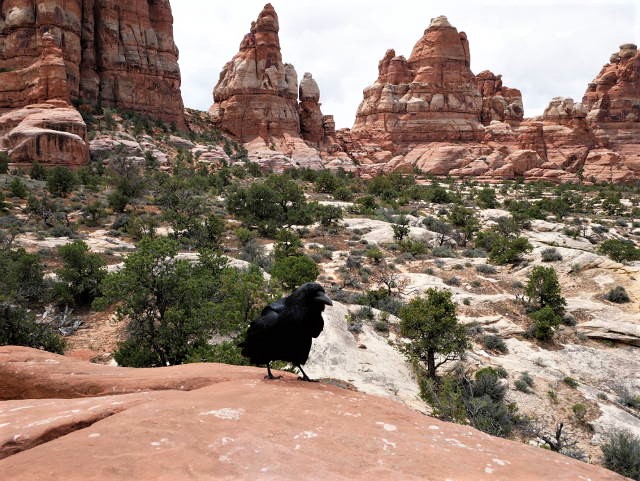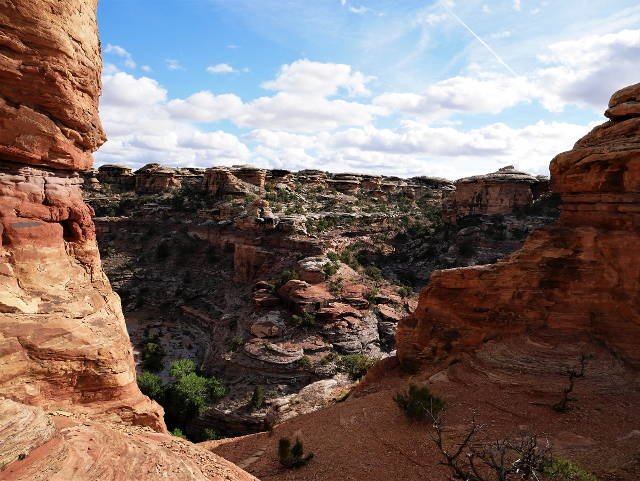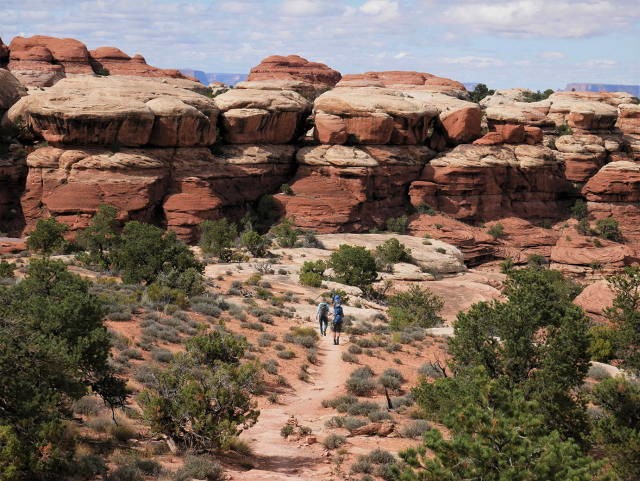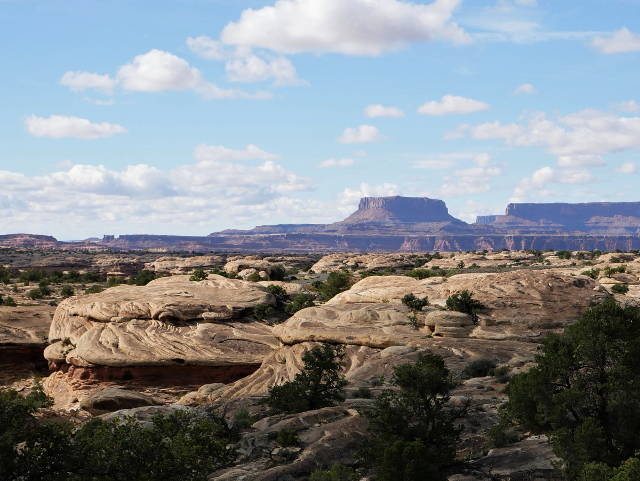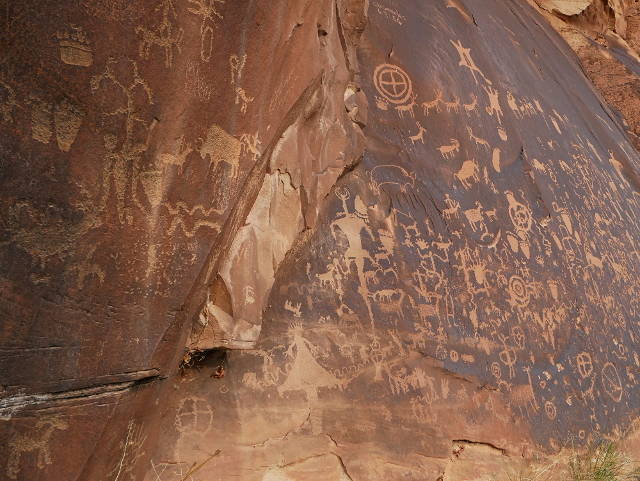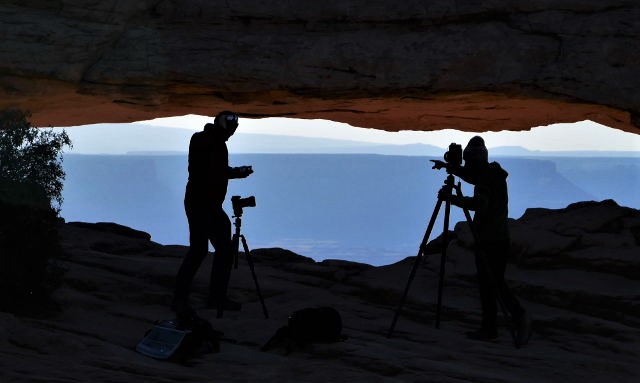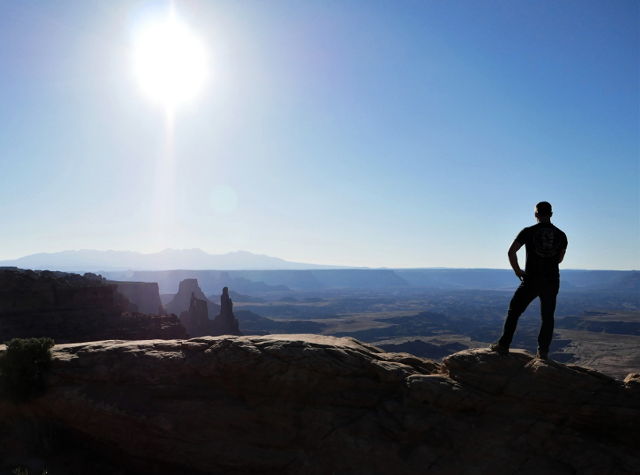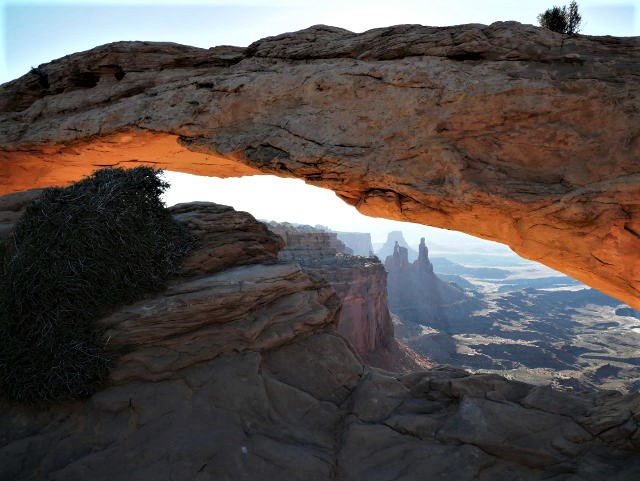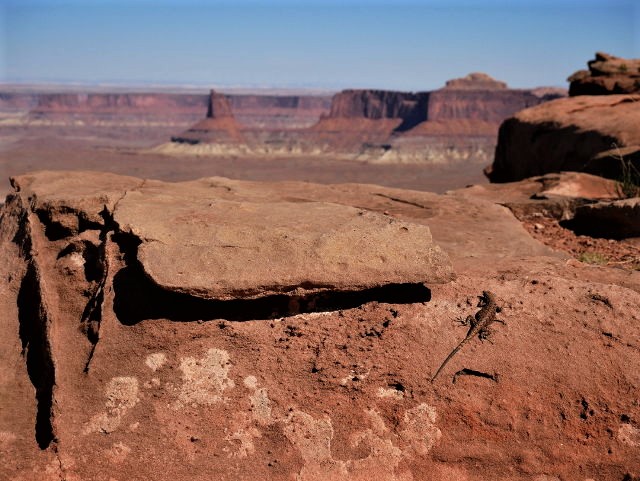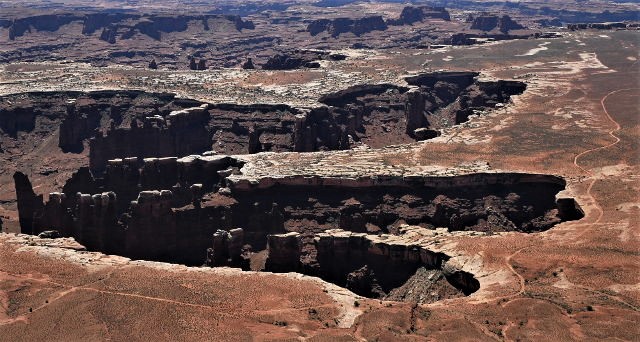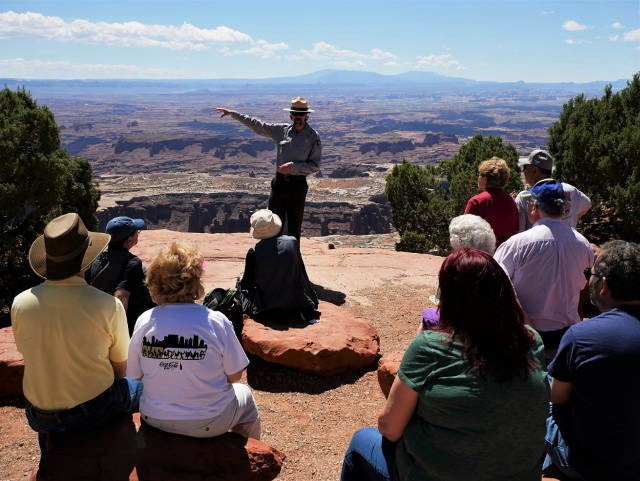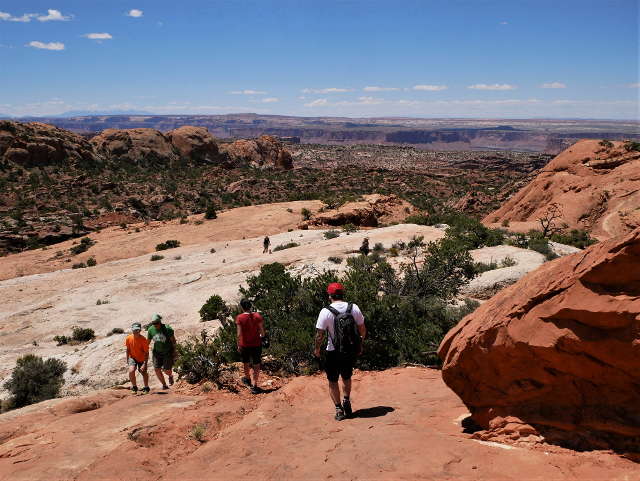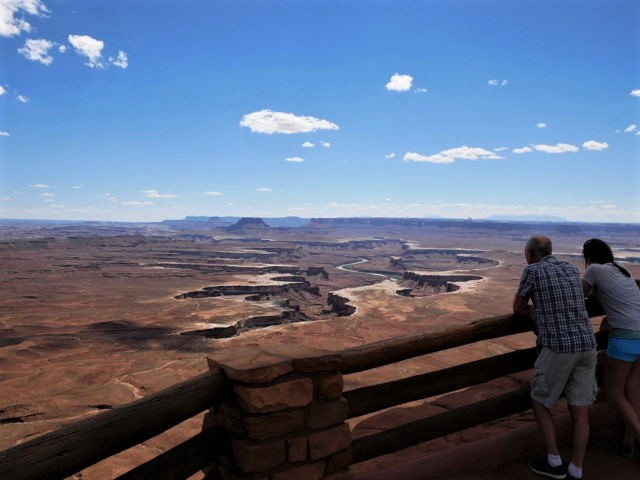I spent a peaceful evening camping in the middle of what could've been an old western movie set location next to a solitary juniper tree and surrounded by burnt red dirt, dried-up cow pies, sagebrush and distant mesas in every direction. Set up on BLM land just outside the Needles district, the closest camper to my site was about three football fields away. Overcast skies meant there was no stunning sunset for evening entertainment, so I turned in early to prepare for a full day of hiking.
It takes a two-hour drive outside the park to travel between Island in the Sky and the Needles. There's no road between the two within Canyonlands due to the extremely rugged terrain. Closer to Moab and Interstate 70 and with more accessible attractions, Island in the Sky is far more popular than the Needles to the south, but the latter offers some of the best desert hiking to be found anywhere in America. Task a dreaming mind with devising the perfect desert hiking paradise and it would fail to spawn anything as impressive as this.
I began a gray morning in the Needles with a short 0.6-mile stroll around Cave Spring Trail to get my blood flowing before heading into the heart of the Needles. A historic cowboy camp protected by an old wooden fence is nestled under an overhang near the start of the trail which meanders around and on top of a rocky plateau. A wooden ladder leads up the formation, where you can do some light scrambling on the reddish-tan and white rocks and see if there's any water from recent rains in the many small potholes scattered about. It isn't very far off the ground, but from up here you can get a panoramic view of the desert landscape for dozens of miles in every direction. It's a good way to get acquainted with the park, but doesn't compare to what lies ahead.
After about an hour I headed back to my car and drove off to Elephant Hill Trailhead to make my way into the Needles. A dirt road leads to an absurdly scenic parking area surrounded on three sides by large rises of eroded Cedar Mesa Sandstone that declare you have arrived.
I walked behind a young German couple up the trail and, after some intense scrambling on slanted rock faces, we noticed we weren't on a trail at all. We hiked back a short distance, realized we'd missed a turn and laughed at our immediate navigational failing.
If it weren't for the hundreds of cairns to point the way, Canyonlands would be an incredibly difficult place to hike. Dirt paths frequently lead onto slickrock and over jumbles of giant boulders where you'd have no idea which direction to go if it weren't for the numerous tiny rock piles. It's tempting to break off the trail and scramble up an interesting rock formation, and there's nothing other than your physical limitations to prevent you from doing so. Though everyone follows the same routes (the Needles offers more than 60 miles of trails), it feels like there's a great deal of freedom while wandering this wilderness.
I hiked to Chesler Park on the recommendation of a park ranger, who said the trail provided some of the best views of the pinnacles. Not far into the hike you pass between two tall rocks that frame your first stunning view of the spires that stand beyond an open clearing of red dirt and sagebrush. The towers are striped with red and white bands and rise up to 400 feet from the earth. The trail leads toward them and away from any trace of present day.
After squeezing through a narrow fissure between two blackened rock walls and passing some incredible backcountry campsites that rest beneath a huge wall of red sandstone, I found myself surrounded by giants in every direction. The foreground was filled with tightly-packed pedestal and mushroom-shaped rocks. In the distance, hundreds of pinnacles of immense heights formed an imposing ring around me. It was like being encircled by a herd of sleeping stegosauruses.
As I entered this arena the sun finally broke through and splashed across the red spires that now contrasted against a light blue sky which held feathery white clouds. I took my seat next to a hungry raven on a warming rock and scanned an astounding setting I knew I'd return to many times in the future when I close my eyes seeking an escape.
Chesler Park itself is an unexpected sight. Rising out of the circle of rugged pinnacles you come upon the flat expanse of a sandy desert grassland speckled with shrubs. The contrast between the intermingling terrains is striking and gorgeous. Prior to the establishment of Canyonlands National Park in 1964, this area was used for cattle grazing by the Dugout Ranch. I've never wanted to be a cowboy, but I also never considered that they tended their herds in such an idyllic setting.
As I made my way through the pinnacles back to the trailhead, sweating now under the hot sun, the trepidation I had felt about hiking alone in the desert was gone. I was a kid again, admiring rock spires now instead of trees. There was nothing on my mind but the world around me and a desire to return again soon to further explore this extraordinary setting.
